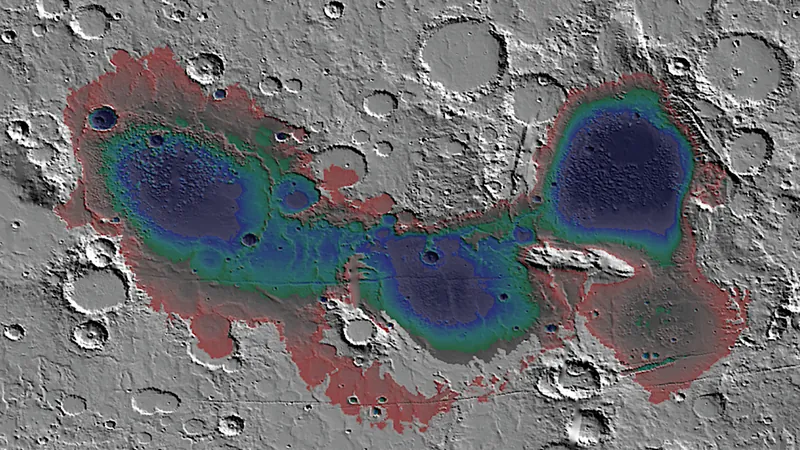
Unveiling the Secrets of Mars: The Geochemical Clue Behind Hydrothermal Organic Molecules!
2025-01-16
Author: Li
Introduction
Hydrothermal environments, characterized by the interaction of heated water and rock, hold an extraordinary significance in the realm of astrobiology. These unique conditions may not only foster habitable environments but also preserve crucial signs of life that could unlock the mysteries of extraterrestrial biology.
Mars and Hydrothermal Environments
Mars, our neighboring planet, is a hotbed of intrigue in this context. Evidence suggests that various hydrothermal environments have existed on Mars in its past, potentially altering organic signals and complicating our understanding of biogenicity—the assessment of life's existence on the planet—alongside the alterations these deposits experienced over time.
The Earth-Mars Connection
On Earth, organic molecules generated in hydrothermal systems provide a tantalizing comparison to what is theorized to be found on Mars. The complex mixtures of molecules arising from these environments have undergone diverse mechanisms of alteration, encompassing both local and transported materials. This means that the organic compounds we study here on Earth may provide significant insights into similar processes on the Martian surface.
Preservation and Circulation of Organic Molecules
Understanding how these organic molecules are preserved and circulated within Earth's hydrothermal settings is critical. Interestingly, the origins and fate of these molecules differ dramatically between marine (ocean-based) and subaerial (land-based) hydrothermal environments. While certain transport and alteration processes may share similarities, their environmental contexts suggest divergent pathways for the organic matter.
The Quest for Organic Molecules on Mars
In our quest to comprehend the origins of organic molecules extracted from Martian samples, we must meticulously investigate the alterations that similar compounds undergo within Earth's hydrothermal systems. Each piece of data helps us form a clearer picture of what Mars may have been like billions of years ago and why it's a prime candidate in the search for extraterrestrial life.
Recent Findings and Future Prospects
Recent studies propose that deposits in the Eridania basin of southern Mars are associated with ancient seafloor hydrothermal activity, dating back over 3 billion years. These findings, coupled with research from the NASA team, strengthen the argument for Mars as a potentially habitable world in its ancient past.
Conclusion
As scientists continue to demystify the relationship between hydrothermal activity and organic molecules, the excitement around astrochemistry and the potential for past life on Mars grows. The journey to uncover the origins of life—whether on Earth or beyond—deepens every day, raising the question: what other astonishing secrets does Mars hold waiting to be discovered? Stay tuned as we delve deeper into this cosmic quest!



 Brasil (PT)
Brasil (PT)
 Canada (EN)
Canada (EN)
 Chile (ES)
Chile (ES)
 Česko (CS)
Česko (CS)
 대한민국 (KO)
대한민국 (KO)
 España (ES)
España (ES)
 France (FR)
France (FR)
 Hong Kong (EN)
Hong Kong (EN)
 Italia (IT)
Italia (IT)
 日本 (JA)
日本 (JA)
 Magyarország (HU)
Magyarország (HU)
 Norge (NO)
Norge (NO)
 Polska (PL)
Polska (PL)
 Schweiz (DE)
Schweiz (DE)
 Singapore (EN)
Singapore (EN)
 Sverige (SV)
Sverige (SV)
 Suomi (FI)
Suomi (FI)
 Türkiye (TR)
Türkiye (TR)
 الإمارات العربية المتحدة (AR)
الإمارات العربية المتحدة (AR)